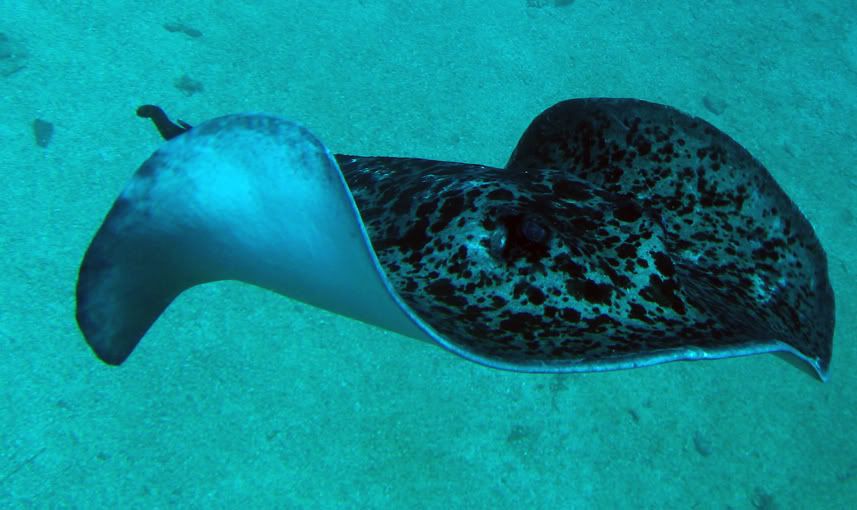Here is the background for my question - I was diving in Truk lagoon and saw quite a few eagle and marble rays. One dive I spotted a marble ray cruising and dropped down over the side of the wreck to get a bit closer and take a photo.
Normally, I have found rays are shy and swim away - however this one was very curious and circled me, swam right alongside me and passed underneath me a couple of times.
Now, I've read about Steve Irwin and I was a bit nervous - when I recounted this story on the boat a lady told me that rays can only deploy their stings (if they have them) when they're sitting in the sand. They simply can't hurt you when they're gliding along in the ocean.
Does anyone know if this is true? This is the beast in question, to be honest I don't even know if it has a sting in it's tail or not bu it does look like it has and better safe than sorry.

Normally, I have found rays are shy and swim away - however this one was very curious and circled me, swam right alongside me and passed underneath me a couple of times.
Now, I've read about Steve Irwin and I was a bit nervous - when I recounted this story on the boat a lady told me that rays can only deploy their stings (if they have them) when they're sitting in the sand. They simply can't hurt you when they're gliding along in the ocean.
Does anyone know if this is true? This is the beast in question, to be honest I don't even know if it has a sting in it's tail or not bu it does look like it has and better safe than sorry.




